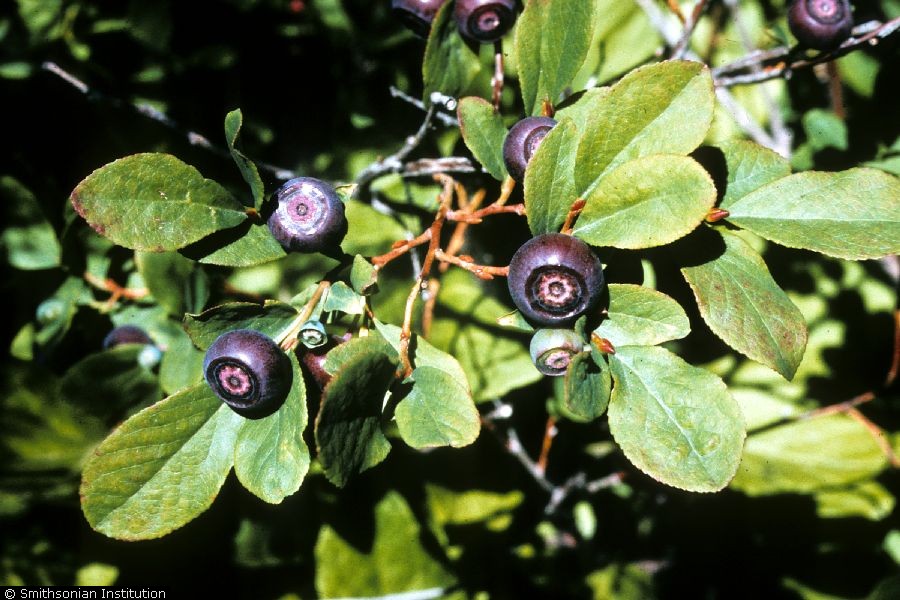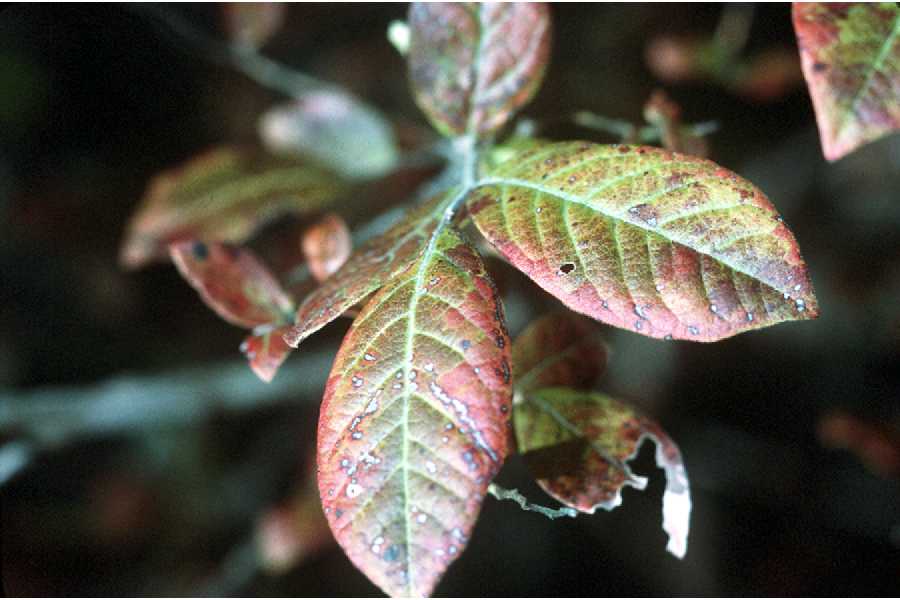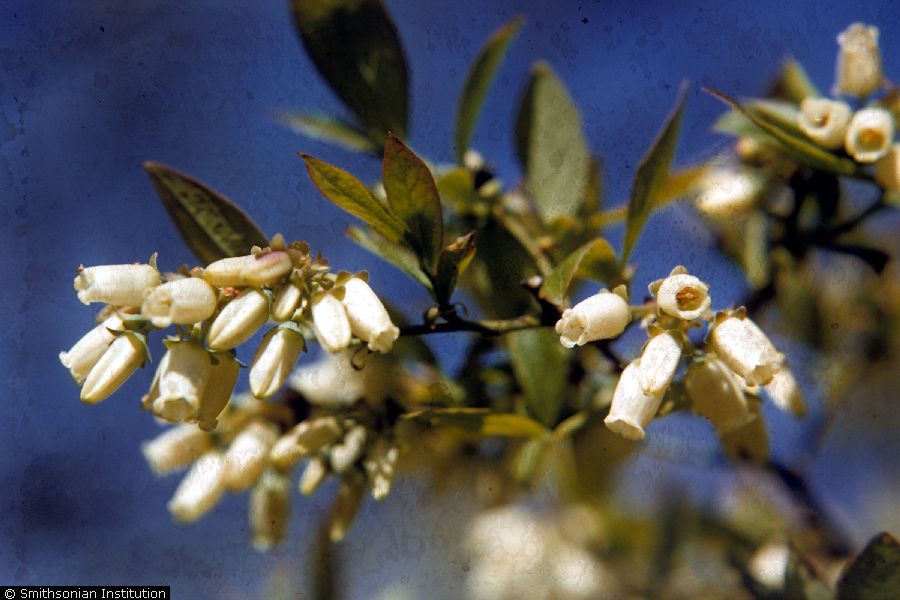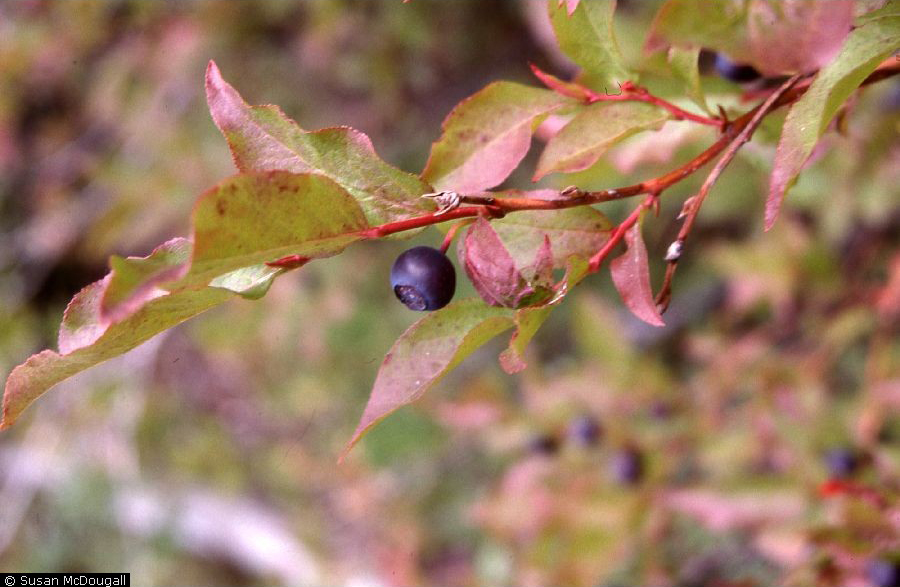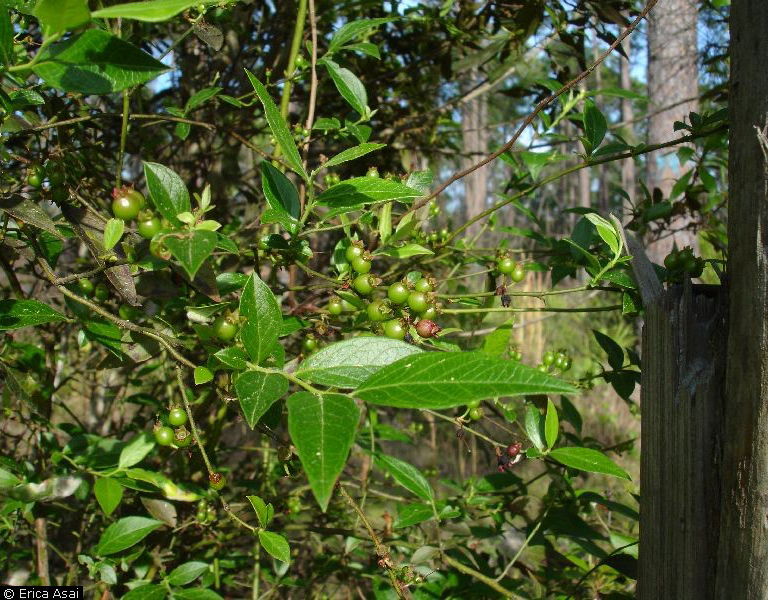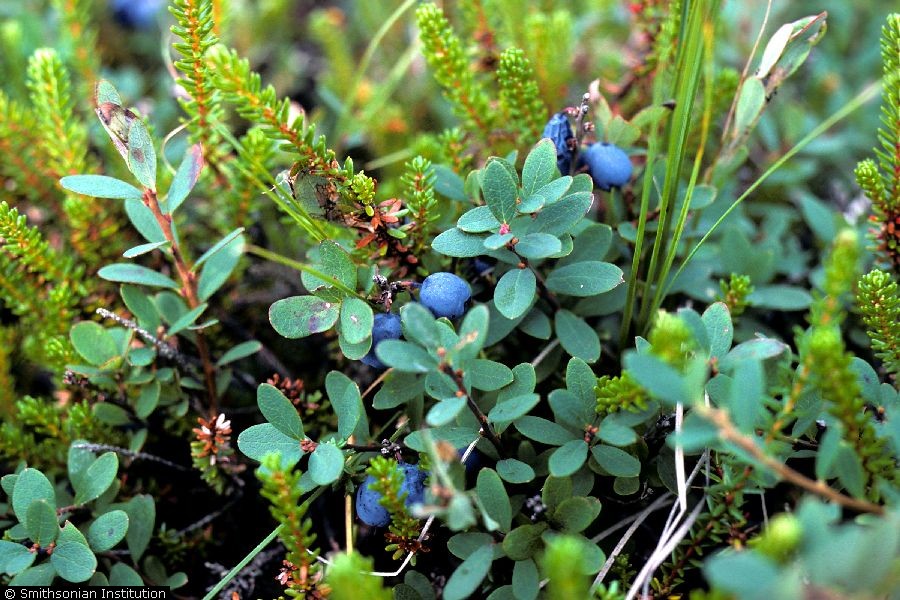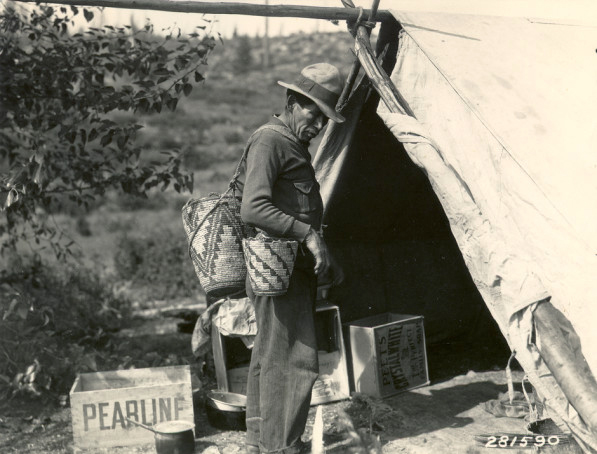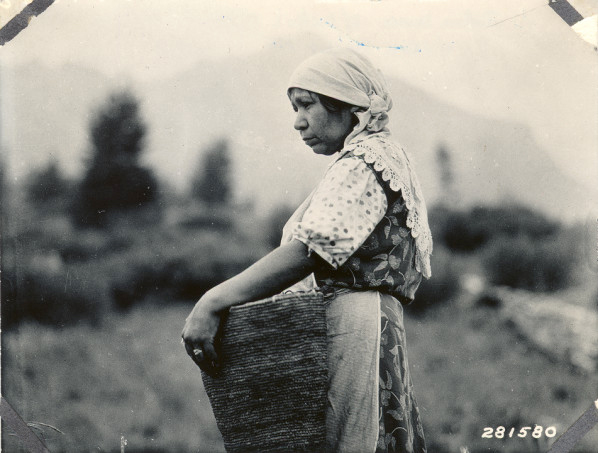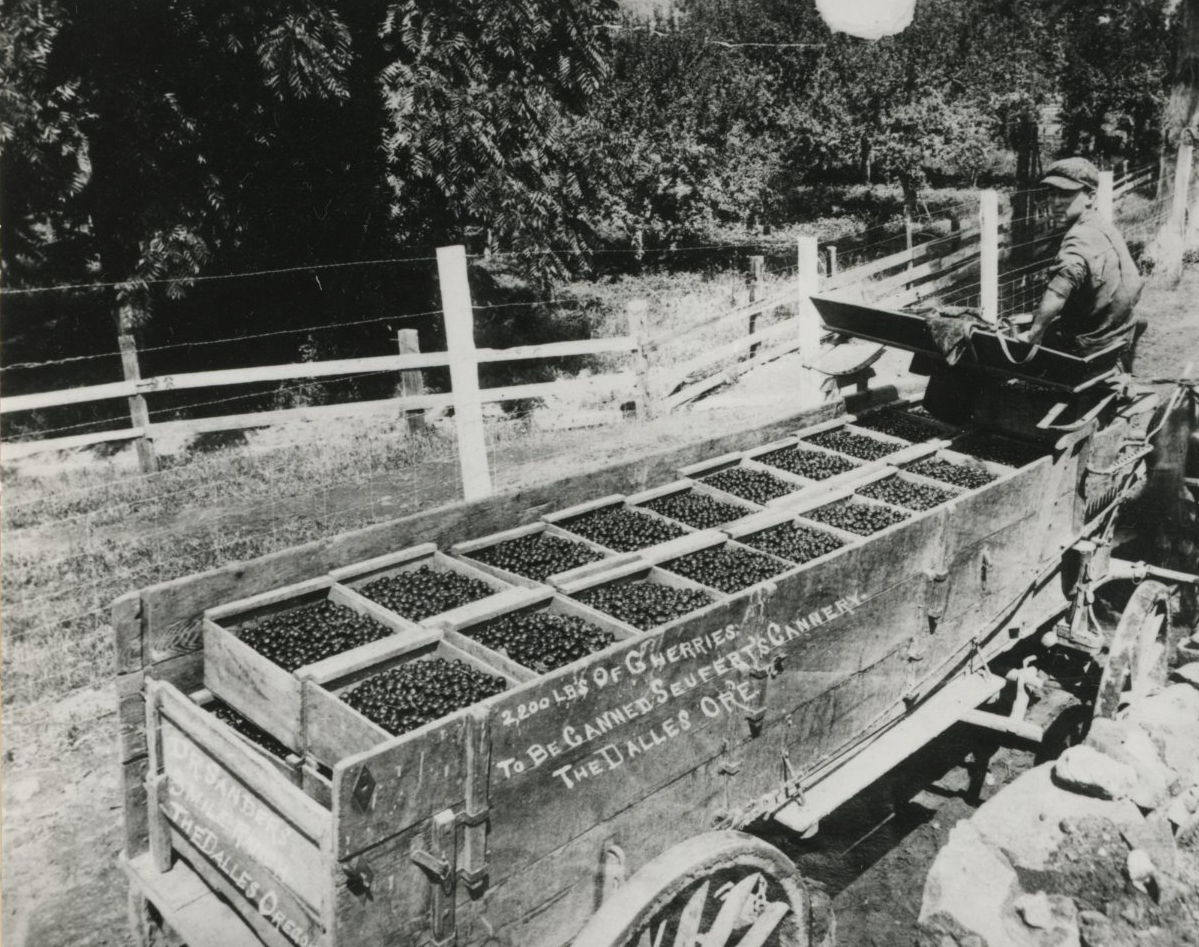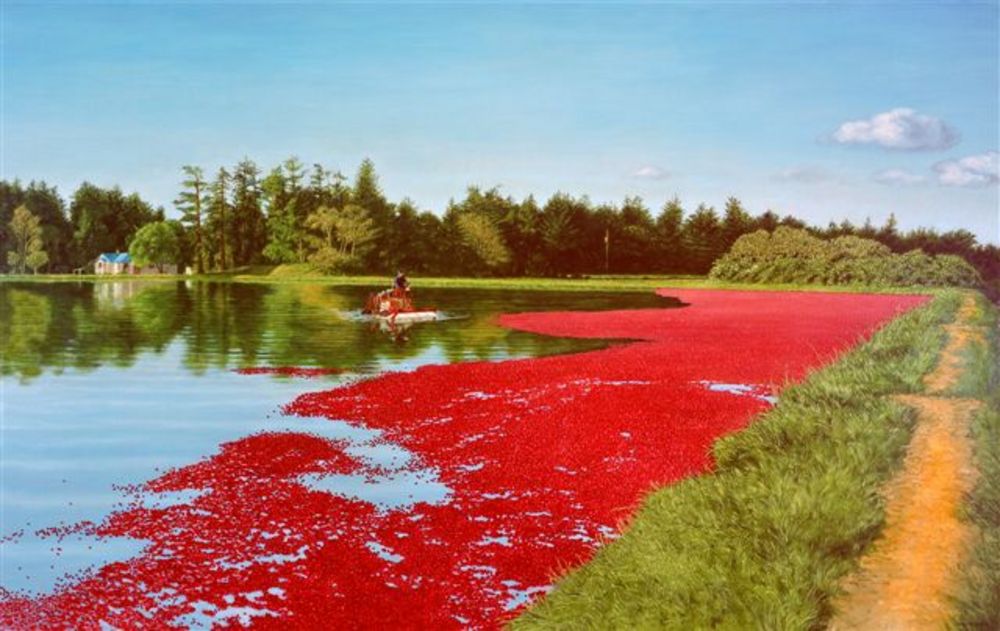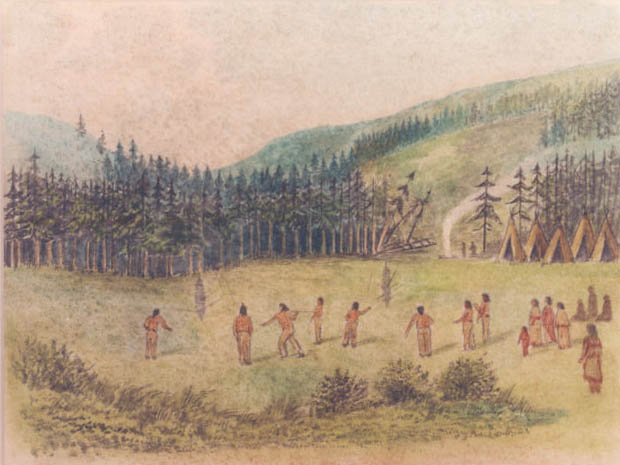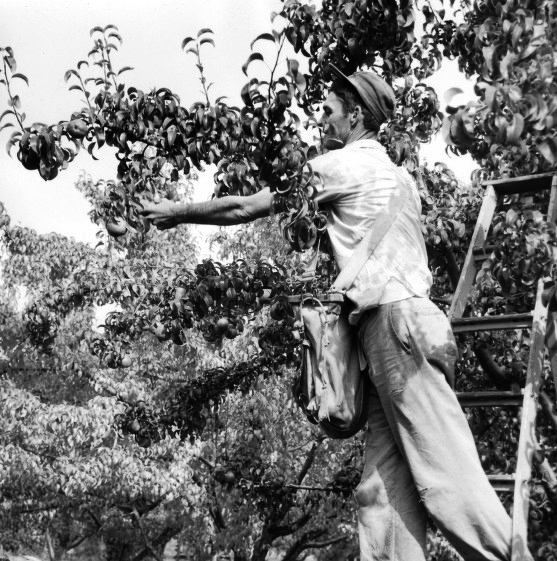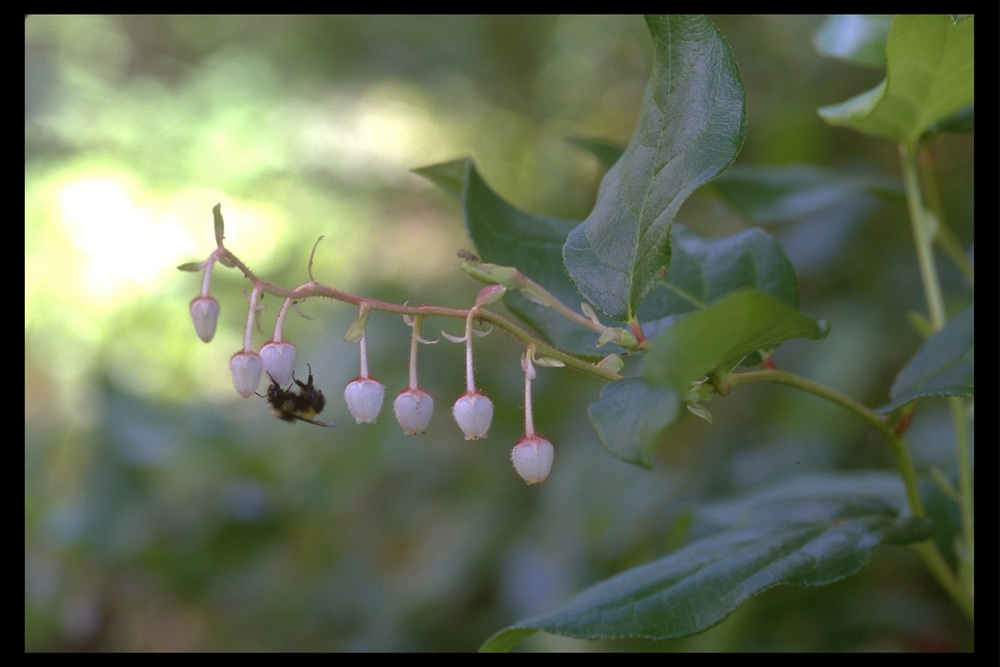Big, fat, store-bought, domesticated blueberries are as close as most Oregonians come to eating Oregon’s native huckleberries. The two fruits differ in much the same way as the so-called wild Himalayan blackberry, Rubus armeniacus, a naturalized weed, differs from the native wild blackberry, R. ursinus, dew berry, or trailing blackberry.
Blueberries and huckleberries are fruits of shrubs in the genus Vaccinium in the Heath family Ericaceae. The fruits are true berries, fleshy throughout, and derived from a single, many-seeded ovary. The most commonly cultivated blueberry species in North America is Vaccinium corymbosum, the northern high bush blueberry and its cultivars.
Blueberry production is a major industry in Oregon, especially in the Willamette Valley, and more recently on the coast near Bandon. Western Oregon's climate, temperature, and precipitation are good for commercial blueberry production when coupled with slightly acidic soil. The state is fifth in blueberry acreage and third in blueberry production in the United States.
Oregon blueberries are grown for local consumption or export to most states and to several foreign countries. They are eaten fresh, canned, frozen, or made into jam, jelly, or pies and baked goods. Berries collected on public land may require a permit, and collectors must seek permission to collect on private land, especially Native American reservations. In recent years, the season for fresh blueberries has been extended by blueberry production in the Southern Hemisphere, particularly Argentina, Chile, and Australia.
Oregonians have another source of blueberries: native Vaccinium species collected in the wild by private individuals or commercial collectors. There are eleven Vaccinium species in the state, and they are known by more common names. Generally, while blueberries are domesticated species, huckleberries are wild species. Other common names include bilberry, wortleberry, and cranberry.
Huckleberries vary in growth habits from woody vines to low dwarf and taller shrubs. Some species are deciduous and others are evergreen. They grow in a variety of habitats, from wet coastal bog to understory shrubs in low-elevation coniferous forests, to subalpine forests, open slopes and meadows throughout Oregon.
Two species, the cranberry and dwarf bilberry are introduced species found in wet coastal habitats. All species serve as food for native animals: birds and mammals, especially bears.
Two native species are noteworthy: thin-leaved or blue huckleberry, Vaccinium membranaceum, and red huckleberry, Vaccinium parvifolium. The former grows in mid to higher elevation coniferous forests. Because of its superior flavor, it is the most extensively harvested wild species. It often forms extensive patches in old burns where there is poor tree regeneration. Native Americans have traditionally eaten the fruit, as do many birds and mammals, and some Native peoples made an infusion of roots and stems for heart problems or as an anti-rheumatic.
Red huckleberry is widely distributed in lower-elevation coniferous forest in soils rich in decaying wood. Native Americans frequently collected its tart red berries, picking them by stripping branches clean of leaves and berries. They then poured the mixture of leaves and berries down wet cedar planks, which the leaves would stick to while the berries bounced or rolled off. They ate fruits fresh or dried and stored them for later use. Some groups used twigs and stems as brooms or made decoctions of bark as a treatment for colds. Modern huckleberry pickers can purchase huckleberry rakes, devices that simplify the process.
-
![Thinleaf huckleberry (Vaccinium membranaceum Douglas ex Torr.).]()
Thinleaf huckleberry, berry and leaf detail 2.
Thinleaf huckleberry (Vaccinium membranaceum Douglas ex Torr.). Photo Richard A. Howard, copyright Smithsonian Inst.
-
![Highbush blueberry (Vaccinium corymbosum L.).]()
Highbush blueberry, leaf detail.
Highbush blueberry (Vaccinium corymbosum L.). Photo Robert H. Mohlenbrock, USDA SCS, Southern wetland flora: Field office guide to plant species (Fort Worth, Tx: South National Technical Center, 1991), courtesy USDA-NRCS PLANTS Database
-
![Highbush blueberry (Vaccinium corymbosum L.).]()
Highbush blueberry, flower detail.
Highbush blueberry (Vaccinium corymbosum L.). Photo Richard A. Howard, copyright Smithsonian Inst.
-
![Thinleaf huckleberry (Vaccinium membranaceum Douglas ex Torr.).]()
Thinleaf huckleberry, berry and leaf detail.
Thinleaf huckleberry (Vaccinium membranaceum Douglas ex Torr.). Photo Susan McDougall, USDA-NRCS PLANTS Database
-
![Highbush blueberry (Vaccinium corymbosum L.).]()
Highbush blueberry, green berries.
Highbush blueberry (Vaccinium corymbosum L.). Photo Erica Asai, courtesy USDA-NRCS PLANTS Database
-
![Red huckleberry (Vaccinium parvifolium Sm.).]()
Red huckleberry, berries and leaves.
Red huckleberry (Vaccinium parvifolium Sm.). Photo Lindsey Koepke, USDA-NRCS PLANTS Database
-
![Dwarf bilberry (Vaccinium cespitosum Michx.).]()
Dwarf bilberry, drawing of.
Dwarf bilberry (Vaccinium cespitosum Michx.). N.L. Britton and A. Brown, An illustrated flora of the northern United States, Canada and the British Possessions, vol. 2 (New York: Charles Scribner's Sons, 1913), p. 699., courtesy USDA-NRCS PLANTS Database
-
![Cranberry (Vaccinium macrocarpon Aiton).]()
Cranberry.
Cranberry (Vaccinium macrocarpon Aiton). Photo Richard A. Howard, copyright Smithsonian Inst.
-
![Whortleberry (Vaccinium myrtillus L.).]()
Whortleberry, berry and leaf detail.
Whortleberry (Vaccinium myrtillus L.). Photo Richard A. Howard, copyright Smithsonian Inst.
-
![Huckleberry picking at Larch Mountain, Multnomah County, Aug. 1943.]()
Huckleberry picking, Larch Mt, Aug 1943.
Huckleberry picking at Larch Mountain, Multnomah County, Aug. 1943. Photo George E. Griffith, Oreg. State Univ. Archives, Gerald W. Williams Collec., WilliamsG:NF6 USFS726838
-
![Indian man picking huckleberries, Gifford Pinchot National Forest, WA, Aug. 1933.]()
Huckleberry picking, man, Aug 1933.
Indian man picking huckleberries, Gifford Pinchot National Forest, WA, Aug. 1933. Photo K.D. Swan, Oreg. State Univ. Archives, Gerald W. Williams Collec., WilliamsG:USFS281590
-
![Indian woman picking huckleberries, Gifford Pinchot National Forest, WA, Aug. 1933.]()
Huckleberry picking, woman, Aug 1933.
Indian woman picking huckleberries, Gifford Pinchot National Forest, WA, Aug. 1933. Photo K.D. Swan, Oreg. State Univ. Archives, Gerald W. Williams Collec., WilliamsG:USFS281580
Related Entries
-
![Bing cherry]()
Bing cherry
Bing, perhaps the most famous and highly regarded sweet cherry in the w…
-
![Cranberry Industry]()
Cranberry Industry
The Oregon cranberry is prized for its deep red color, which growers sa…
-
![Indian Use of Fire in Early Oregon]()
Indian Use of Fire in Early Oregon
Anthropogenic (human-caused) fire was a major component of the Native s…
-
Marionberry
The blackberry cultivar, Marion, often called "marionberry" by consumer…
-
Pears and the pear industry
European pears (Pyrus communis) thrive in the temperate climate of the …
-
![Salal]()
Salal
Both Meriwether Lewis and William Clark wrote about salal (Gaultheria s…
Related Historical Records
Map This on the Oregon History WayFinder
The Oregon History Wayfinder is an interactive map that identifies significant places, people, and events in Oregon history.
Further Reading
Jensen, Edward, Warren Randall, Robert Keniston, and Dale Beyer. Manual of Oregon Trees and Shrubs. Corvallis: Oregon State University, 1981.
Moerman, Daniel E. Native American Ethnobotany. Portland, Ore.: Timber Press, 1998.
Pojar, Jim, and Andy MacKinnon, eds. Plants of the Pacific Northwest Coast: Washington, Oregon, British Columbia, & Alaska. Vancouver, B.C.: Lone Pine Pub., 1994.

